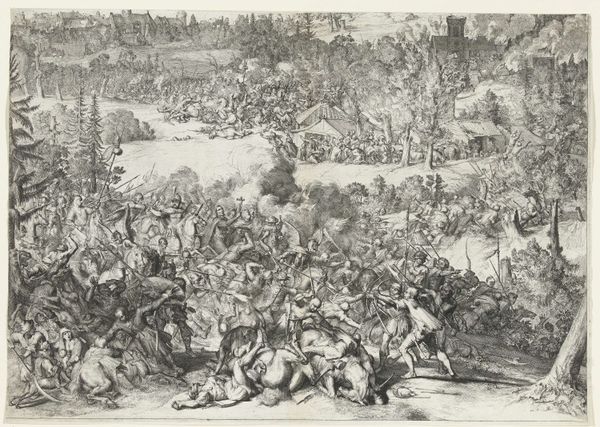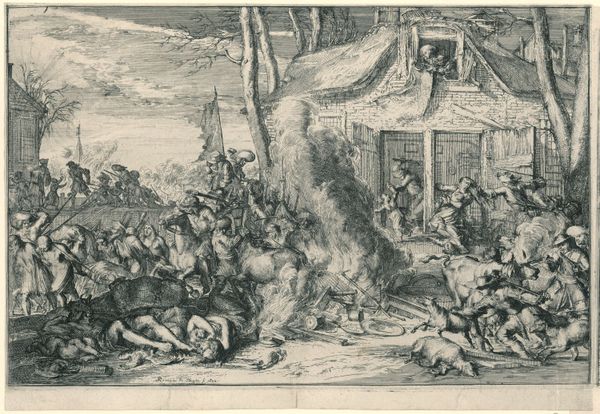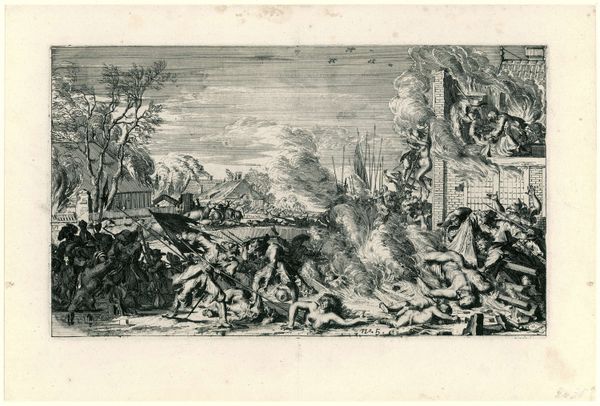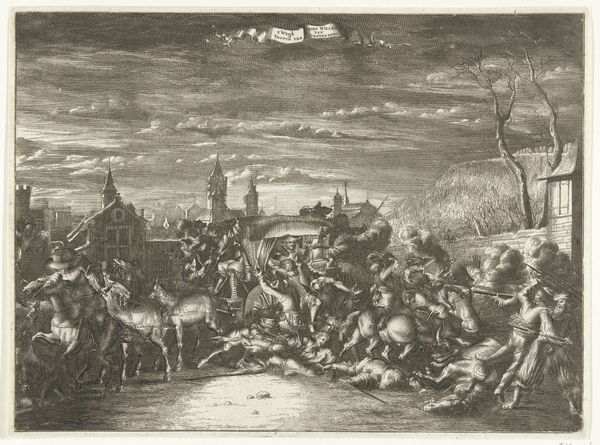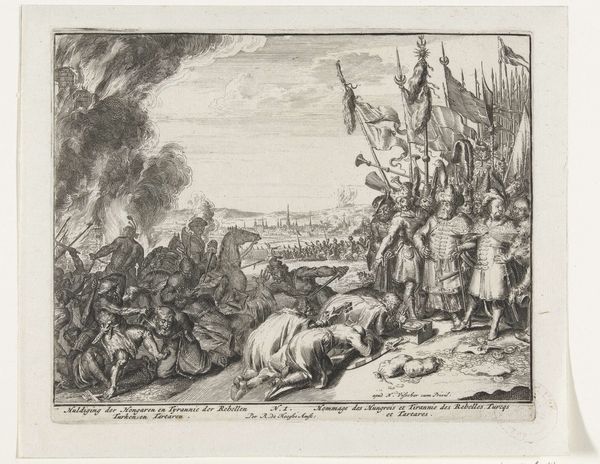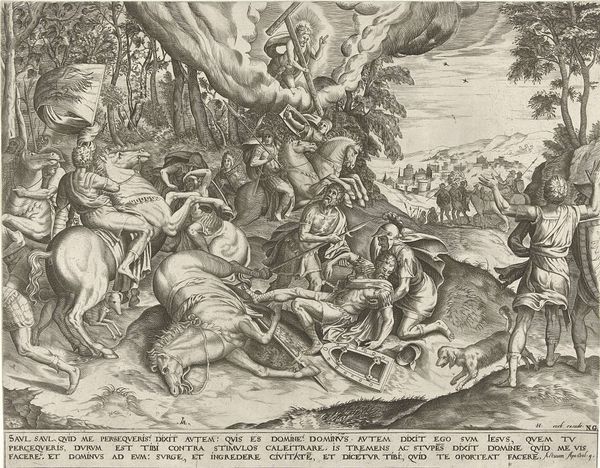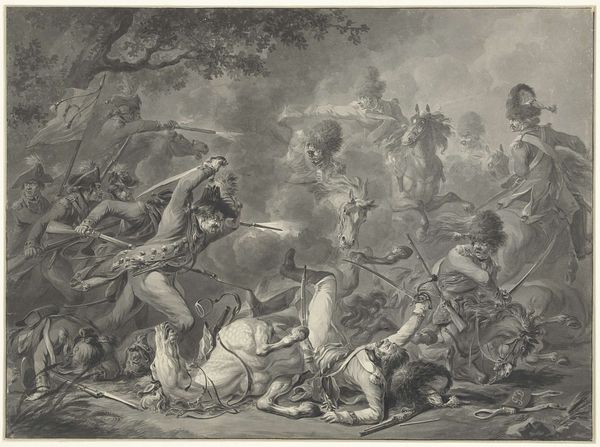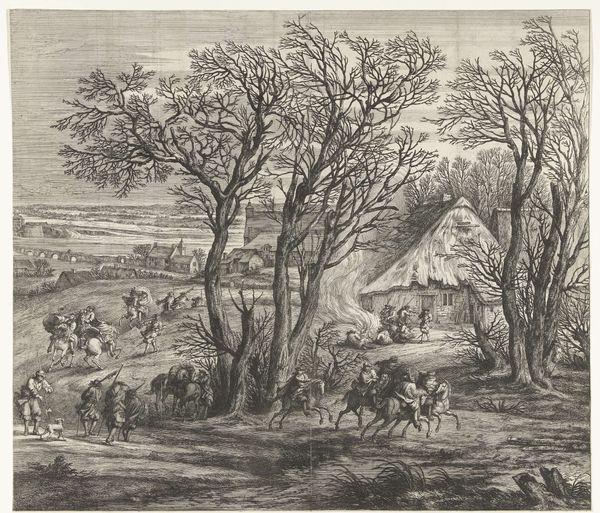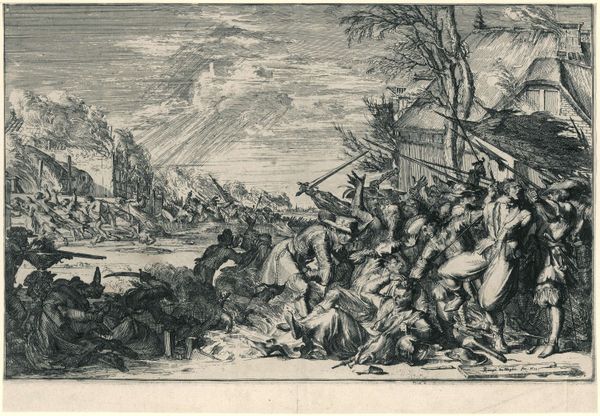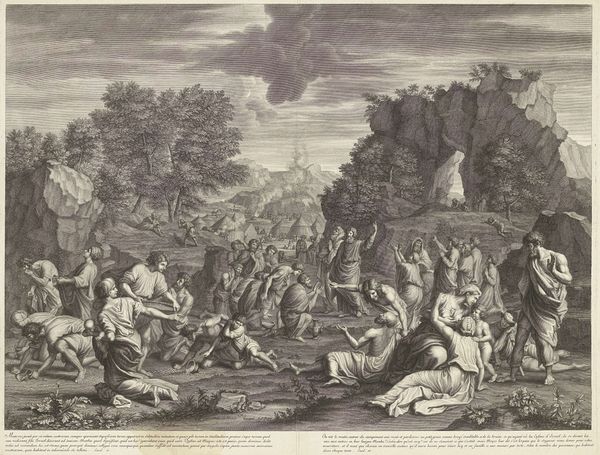
Overwinning van hertog Karel V van Lotharingen en markgraaf Lodewijk Willem van Baden-Baden op de Turken, 1687 1687
0:00
0:00
print, engraving
#
narrative-art
#
baroque
# print
#
pen sketch
#
landscape
#
figuration
#
line
#
history-painting
#
engraving
Dimensions: height 515 mm, width 725 mm
Copyright: Rijks Museum: Open Domain
This etching, made in 1687 by Romeyn de Hooghe, depicts the victory of Duke Charles V of Lorraine and Margrave Louis William of Baden-Baden over the Turks. Note the chaotic scene filled with suffering figures amidst the burning landscape. The motif of the defeated enemy at the feet of the victor has ancient roots. We can see it in Roman triumphal arches, where subjugated barbarians are often depicted kneeling before the emperor. This pose, laden with power dynamics, speaks to a deep-seated human desire for dominance. But the image of defeat is not only about power, it's also a stark reminder of mortality. The fallen figures in this print echo the pathos-filled images of martyrs, inviting viewers to contemplate the transient nature of life and glory. This visual language is ever-evolving, shaped by our collective memory and resurfacing in unexpected ways. The symbolism here taps into a well of subconscious associations, evoking a powerful emotional response that transcends time.
Comments
No comments
Be the first to comment and join the conversation on the ultimate creative platform.
